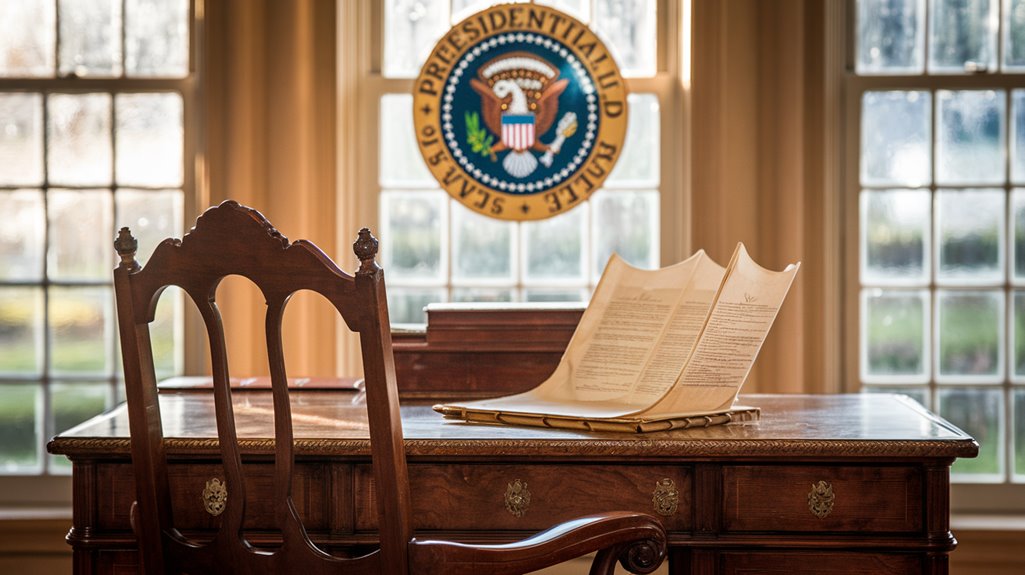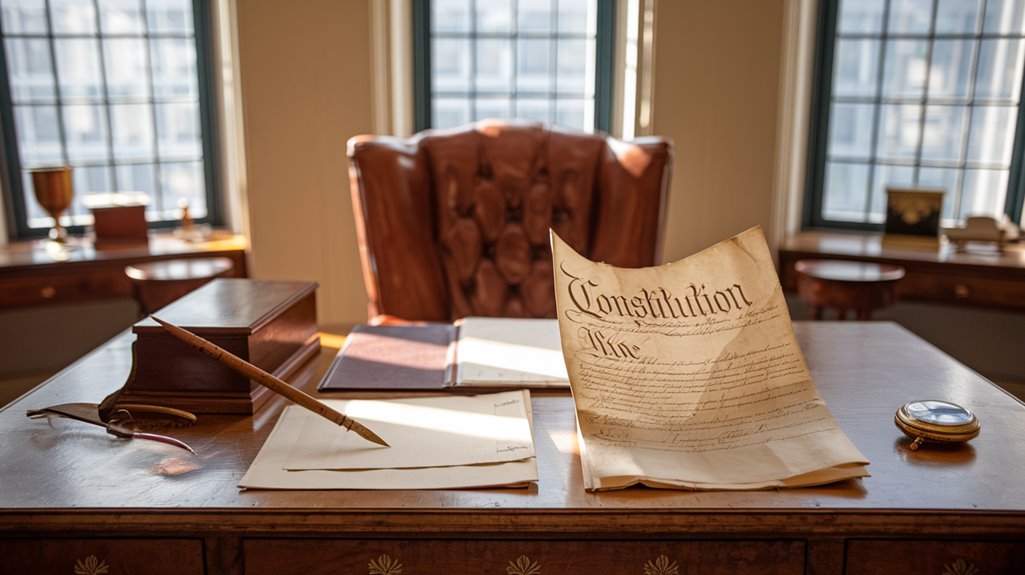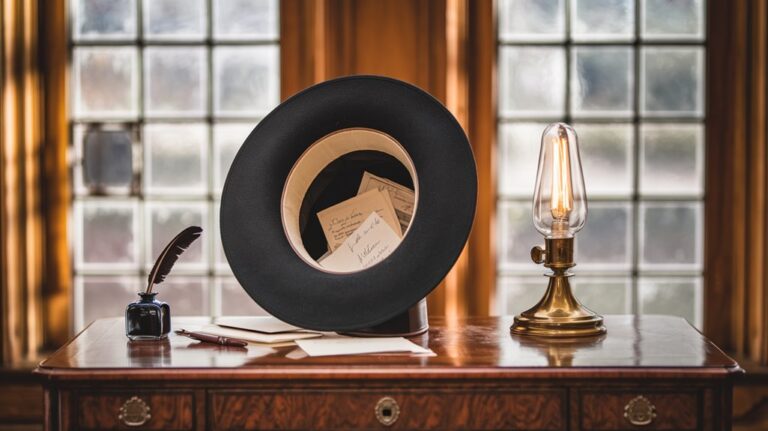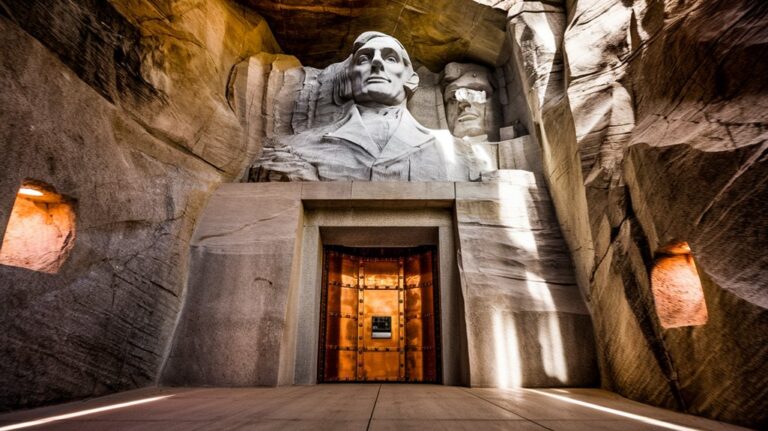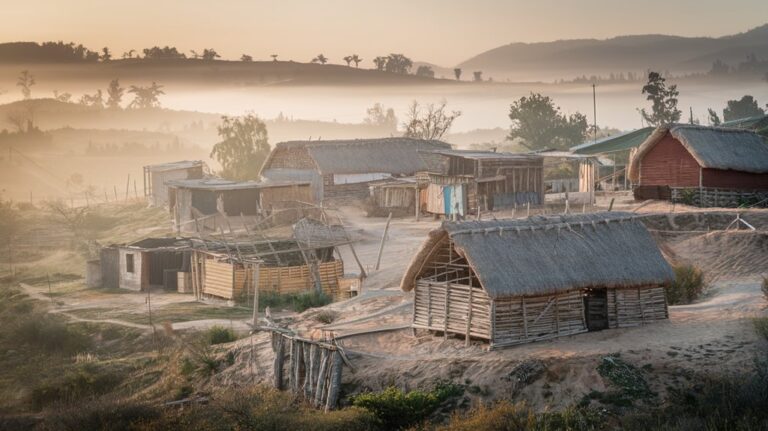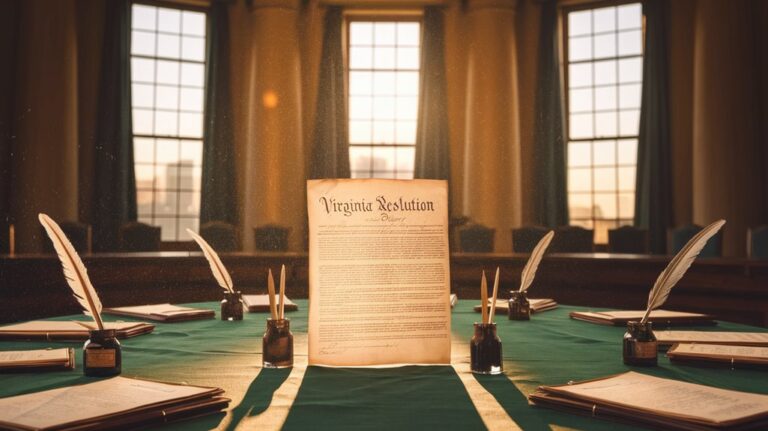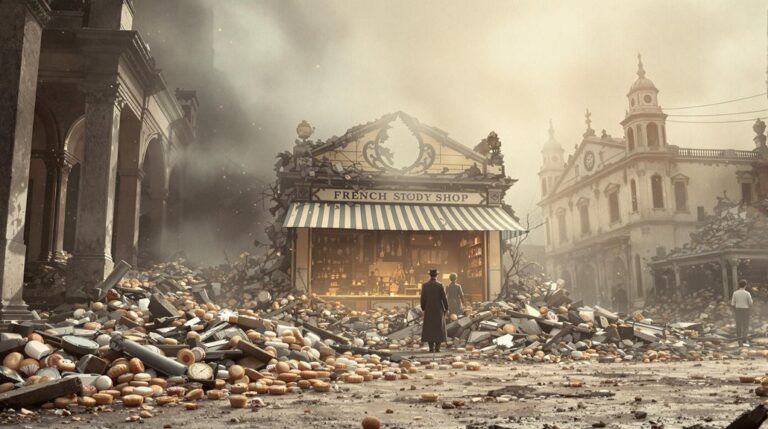Why “President” Isn’t a King: The Story Behind the Title
Did you know that more than 76% of Americans can't correctly identify all three branches of government? Yet you're living under a system carefully designed to be the opposite of a monarchy. When the Founders created the role of president, they weren't just picking a fancy title—they were making a bold statement about power and its limits. To understand why you're casting votes instead of pledging allegiance to a crown, you'll need to explore the fascinating story behind America's unique leadership experiment.
The Birth of Presidential Power: From Monarchy to Democracy
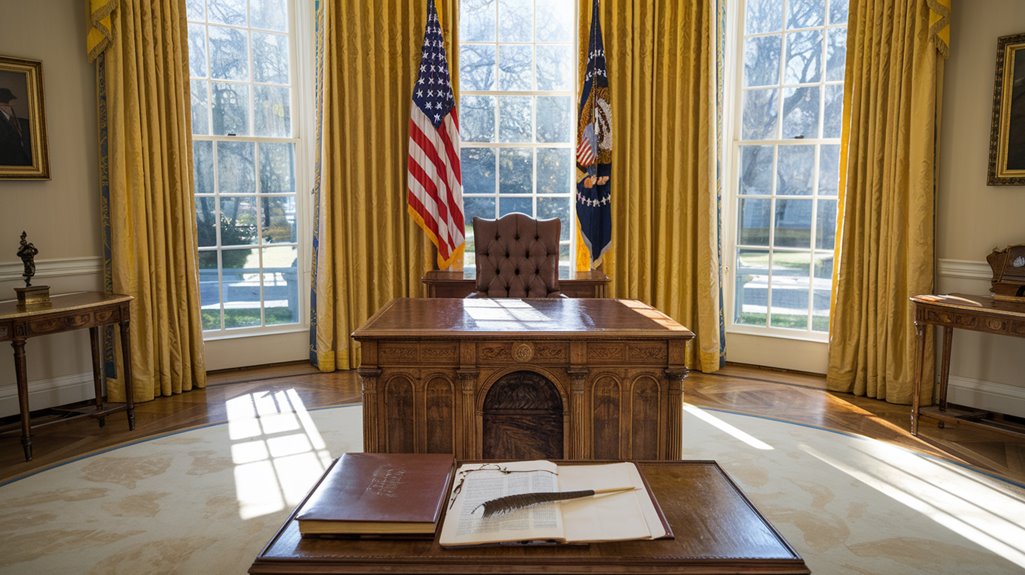
When the Thirteen Colonies broke free from British rule, they faced an essential challenge: how to create a leadership position with sufficient authority while avoiding the tyranny they'd just escaped.
The Constitutional foundations they established reflected this delicate balance, first attempting a weak central government through the Articles of Confederation. The delegates met in closed-door negotiations during the Constitutional Convention to create a stronger executive office.
You can see how the Early Presidents shaped this evolutionary process. George Washington set significant precedents by stepping down after two terms, while Alexander Hamilton argued for an "energetic" executive that remained accountable to the people. The fierce debate between the Federalists and Anti-Federalists highlighted the struggle to define federal versus state powers.
Andrew Jackson later transformed the presidency by expanding public participation in democracy.
Through careful checks and balances, you'll notice how America's founders crafted a unique leadership role that drew clear boundaries between presidential power and monarchical rule.
Power by the People: How Presidents Differ From Kings
The stark differences between presidents and kings demonstrate America's revolutionary shift from monarchical rule to democratic governance.
Unlike monarchs who inherit their position by birthright, presidents derive their power through electoral legitimacy and civic engagement.
You'll find that presidents operate within strict constitutional boundaries, facing term limits and accountability measures that guarantee they serve the people's interests.
They can't rule indefinitely like kings, and their powers are checked by other branches of government.
The role of president established a precedent where separation of powers divides authority between executive, legislative, and judicial branches.
Presidential decisions are subject to independent investigations that help maintain integrity in governance.
While kings traditionally wielded absolute authority, presidents must navigate a complex system of checks and balances.
They're responsible for both ceremonial duties and practical governance, making them active participants in democracy rather than symbolic figureheads like many modern monarchs.
Term Limits and Accountability: Breaking From Royal Tradition
Since America's founding fathers rejected the idea of lifelong rule, presidential term limits have become a cornerstone of U.S. democracy. You'll find this commitment to preventing monarchy-like power formalized in the Twenty-second Amendment, which guarantees no president can serve more than two terms or 10 years in office.
Three key differences between presidents and kings highlight this democratic approach:
- Presidents must face regular elections and answer to voters.
- They're subject to robust accountability mechanisms through checks and balances.
- Their power expires after a maximum of two terms, preventing long-term concentration of authority.
This system emerged largely from the post-Roosevelt era when Congress sought to prevent any future president from serving four terms. Before Roosevelt, George Washington's precedent of serving only two terms had been respected by all presidents. The president's actions remain under constant scrutiny through oversight hearings conducted by Congress to ensure proper governance.
Today, term limits continue safeguarding democracy by guaranteeing fresh leadership and maintaining the distinction between elected official and monarch.
Modern Leadership: Symbols vs. Executive Authority
Modern leadership symbols diverge sharply from traditional monarchical imagery, reflecting a fundamental shift in how we comprehend and express authority. While kings relied on crowns and scepters for symbolic representation, today's leaders use corporate logos, personal branding, and innovative leadership metaphors like chess pieces and lightbulbs to convey their influence. Archetypal patterns profoundly shape how leaders and followers interact in organizations.
You'll notice that executive authority in the United States deliberately distances itself from royal symbolism. Instead of divine right or royal prerogatives, presidential power stems from constitutional limits and the mandate to execute laws.
This shift isn't just cosmetic – it's foundational to democratic governance. Modern leadership emphasizes guidance, entrepreneurship, and servant leadership rather than hereditary authority, with symbols that reflect collaboration and strategic vision rather than absolute power. The evolution of leadership imagery now incorporates social media platforms as modern tools for projecting authority and connecting with followers.
The Evolution of Leadership: Kings and Presidents in Today's World
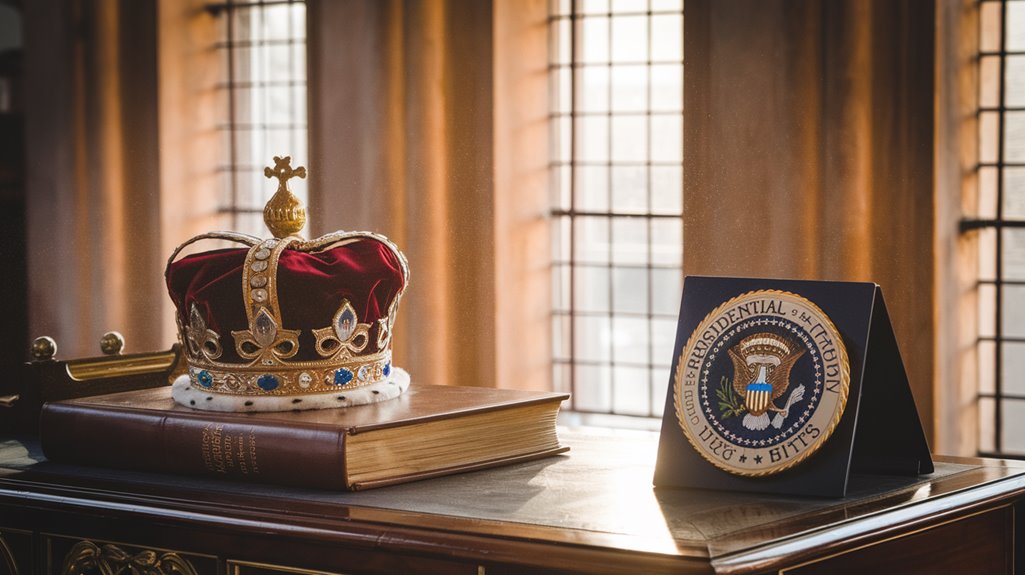
Leadership's transformation from monarchical rule to presidential governance represents one of history's most significant power shifts.
You'll find that today's presidential authority stems from a careful balance between executive power and democratic constraints – a stark contrast to the monarchic legacy of absolute rule.
Consider these key evolutionary differences:
- While kings inherited power through bloodlines, presidents must earn public trust and navigate complex party dynamics.
- Modern presidents face institutional checks that limit their authority, unlike traditional monarchs who ruled by divine right.
- Presidential leadership requires constant adaptation to public sentiment, whereas monarchs historically ruled with minimal accountability.
The framers deliberately established these limitations after leading a revolution that rejected concentrated power in a single ruler's hands, making separation of powers a cornerstone of the new system.
You'll notice that despite expanded executive powers over time, presidents remain bound by constitutional frameworks, public scrutiny, and the need to maintain legitimacy through democratic processes – constraints that didn't exist in traditional monarchies. The founding fathers deliberately designed an institutional confederacy rather than a monarchy, drawing inspiration from the Roman Republic's fluid leadership model.

